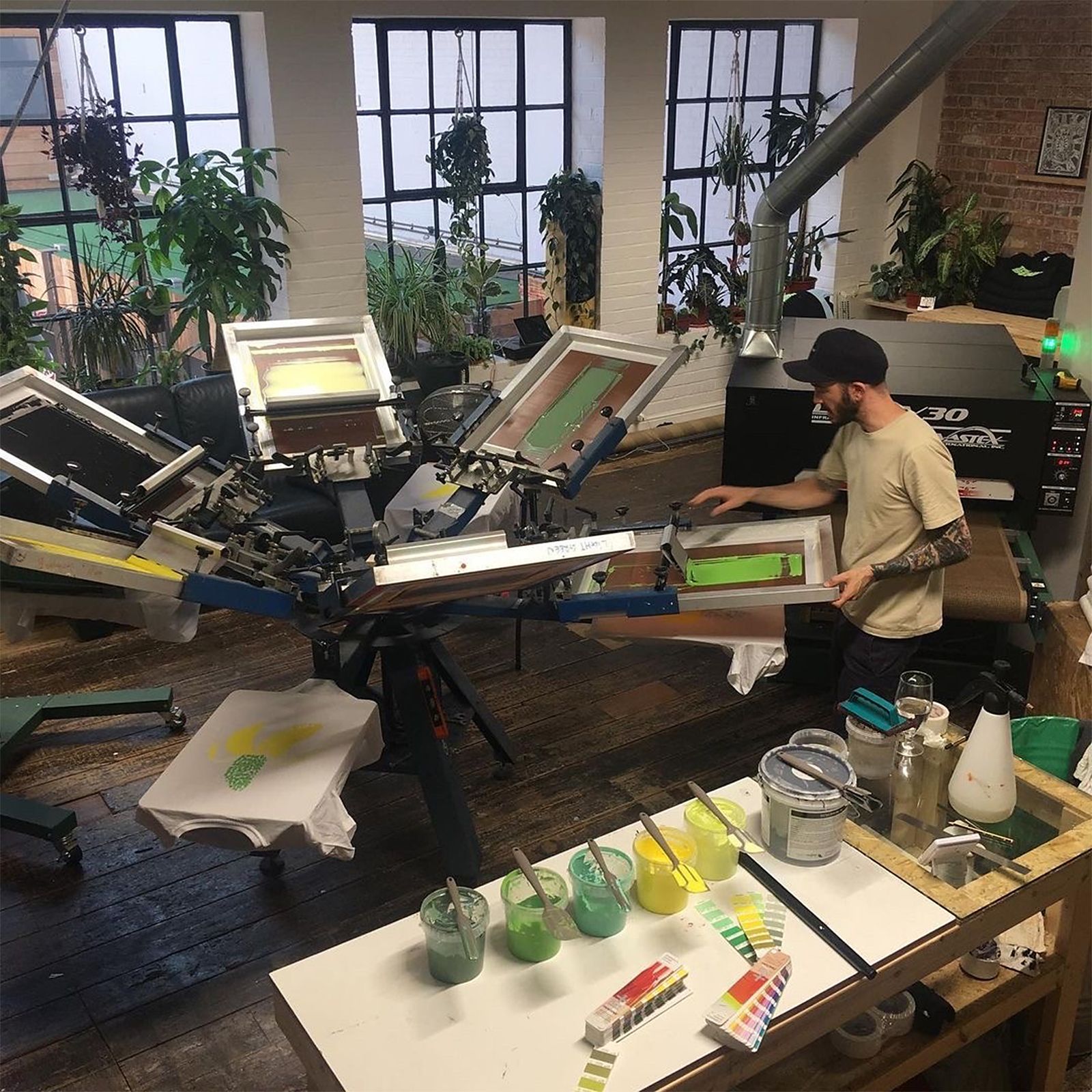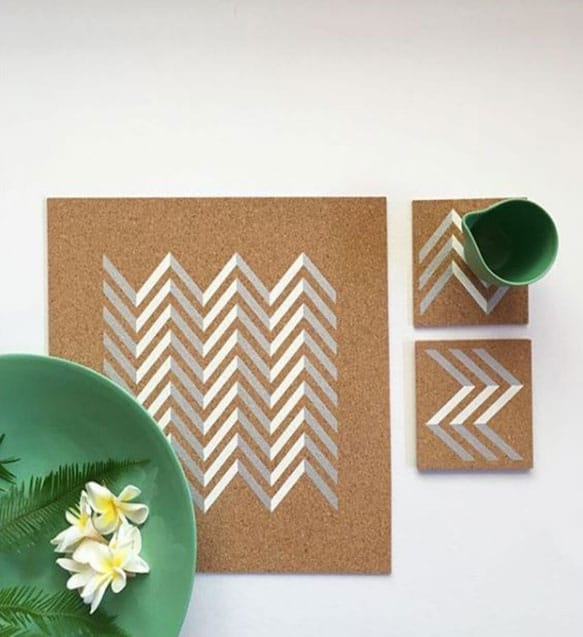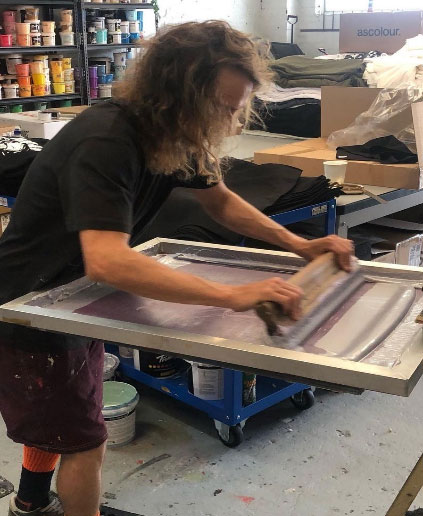Eco-friendly Screen Printing Tips for Artists
As an artist, you have the power to make a positive impact on the environment through your printing practice. Embracing eco-friendly screen printing products and techniques not only reduces your carbon footprint but also promotes sustainability and creates a more environmentally conscious artistic process. In this blog, we will explore various tips and strategies on how to make eco-friendly screen printing choices, from using non-toxic inks and sustainable materials to adopting low-impact techniques. Discover how you can create sustainable art while contributing to the screen printing industry’s sustainability efforts.

Is Screen Printing Environmentally Friendly?
Are you wondering how to make eco friendly screen prints? Screen printing, when approached with sustainability in mind, can be an environmentally friendly printing method. By adopting eco-friendly screen printing practices, artists and businesses can make a positive impact on the environment. Choosing non-toxic inks, such as water-based inks, reduces the release of harmful chemicals into the environment. Additionally, embracing low-impact printing techniques like digital pre-press methods can further reduce waste and energy consumption.
To make screen printing more eco-friendly, it’s crucial to select sustainable materials, such as organic or recycled fabrics and consider the entire lifecycle of the products being printed. Minimising waste through proper ink management, recycling and reusing screens will also contribute to greater sustainability.
While screen printing offers numerous benefits, including versatility and durability, it’s essential to be mindful of the potential environmental challenges associated with the process. Managing energy consumption, reducing water usage and implementing efficient production practices can help mitigate the environmental impact.

Benefits of Adopting Eco-friendly Screen Printing Practices
Adopting eco-friendly screen printing practices offers a multitude of benefits:
- Reduced Environmental Impact: By choosing non-toxic inputs, such as water-based inks, you minimise the release of harmful chemicals into the environment. Using sustainable materials, such as organic or recycled fabrics, further reduces the ecological footprint of your prints.
- Waste Reduction: Implementing proper ink management techniques such that you recover as much unused ink at the end of a run as possible and reuse in the next run requiring that colour. Reusing screens also helps reduce waste generation.
- Worker Safety: Eco-friendly screen printing eliminates exposure to toxic substances, creating a safer working environment for artists and employees. Plastisol, discharge and UV curable inks are all notorious for toxic, carcinogenic and or neurotoxic fumes given off during the printing and/or curing processes.
- Enhanced Brand Image: Showcase your commitment to environmental responsibility. This will attract environmentally conscious consumers and enhance your brand’s image. For pre-millenials, this is a nice option. For post millennials, it’s a given.
- Appeal to Eco-Conscious Customers: Sustainable screen printing aligns with the values of eco-conscious consumers who actively seek out environmentally friendly products. By offering sustainable prints, you cater to their preferences and expand your offering to this growing customer base.
By incorporating these environmentally friendly screen printing practices into your processes, you not only contribute to a more sustainable industry but also establish yourself as a responsible artist or business.
Choosing Non-toxic Printing Inks and Supplies
When making eco-friendly screen printing choices, selecting non-toxic inks and supplies, including screen printing inks for dark textiles is crucial. Make the switch to water-based inks that have zero (or very low levels of) volatile organic compounds (VOCs) compared to solvent-based inks. These inks are not only safer for the environment but also for the artists and workers handling them. Also choose non-toxic cleaning agents, emulsions and reclaiming chemicals that minimise harm to both human health and the environment. By taking a wholistic approach and using non-toxic printing inks and supplies, you ensure a safer and more sustainable screen printing practice.
Discover Our Range of Water-based Inks
Explore our diverse range of water-based inks, for textiles and for other substrates. These are specially formulated for eco-friendly screen printing on fabrics made of both natural and synthetic fibres, paper, board, a wide variety of plastics plus coated metals and even glass. Our water-based textile inks offer vibrant colours, excellent adhesion and soft-feel prints on a variety of fabric types. Discover the possibilities of water-based inks for paper and other materials and create artwork that is not only visually captivating but also environmentally conscious. With low/no VOC and easy clean-up, these inks represent an ideal choice for artists seeking sustainable screen printing options.
Choosing Sustainable Printing Materials
Choosing sustainable printing materials is an integral part of eco-friendly screen printing. Look for responsibly sourced and recycled materials, such as hemp, organic and/or recycled cotton fabrics, bamboo fabric and paper, recycled paper, FSC-certified paper or recycled fabric to minimise your environmental impact. Consider the life cycle of the materials you use, ensuring they are biodegradable, compostable, or recyclable whenever possible. Making these conscious choices not only benefits the environment but also aligns with the principles of screen printing sustainability, creating a more eco-friendly and socially responsible approach to your screen printing practice.
Adopting Low-impact Printing Techniques
Adopting low-impact printing techniques is another key aspect of eco-friendly screen printing. Consider using digital pre-press methods such as printing stencils direct to screen. This will significantly reduce material waste and energy consumption.
Adopting low-impact printing techniques can be further enhanced by using the exact amount of ink and materials needed for each print job. This minimises waste and ensures efficient use of resources. Another eco-friendly practice is the reuse of screens. Proper cleaning and maintenance of screens allows for their repeated use, reducing the need for new screens and reducing waste in the overall process.
Case Study: I Dress Myself
I Dress Myself, a screen printing business based in Frome, Somerset, UK, has been unwavering in their commitment to sustainability since their inception. They have established themselves as pioneers in eco-friendly practices by using PERMASET eco-friendly water-based inks exclusively. These inks offer exceptional durability, vibrant colours, and a solvent-free cleaning process, creating a healthier work environment.
Beyond their own printing operations, I Dress Myself has formed a partnership with Colormaker Industries to assist other printers in transitioning to water-based inks. They understand the challenges associated with water-based printing, such as drying times and multi-color print runs on dark colours. They have lived experience that the environmental benefits far outweigh the up front effort required.
With 15 years of experience, I Dress Myself has become proficient in the intricacies of water-based printing. They’ve abstained from using harmful discharge inks and plastisol inks, opting for a sustainable alternative and in the process enhancing, rather than compromising the quality of their finished product range. I Dress Myself’s dedication to eco-friendly screen printing is evident in their actions and results, giving them a strong market following and making them a shining example in the industry.
Recycling and Waste Reduction Tips
To enhance the sustainability of your screen printing practice, consider implementing the following recycling and waste reduction strategies:
- Use Recycled Materials: Opt for recycled paper or cardboard for packaging and promotional materials where possible, thus reducing the demand for virgin materials and in doing so, reducing your environmental impact.
- Implement a Waste Management System: Establish a system for proper separation and recycling of materials used in the screen printing process, such as ink containers, cardboard cores and packaging materials.
- Explore Repurposing and Upcycling: Look for creative ways to repurpose or upcycle waste materials generated during the screen printing process. This could include using scrap fabric or paper for smaller projects, creating unique artwork and use old T-shirts as rags or donate them to charity.
- Educate and Engage: Educate your team and clients about the importance of recycling and waste reduction, not only in screen printing but also across society. Encourage them to actively participate in sustainable practices and raise awareness about the environmental benefits.
- Embrace the Circular Economy: Emphasise the principles of the circular economy by promoting the reuse, repair and recycling of materials. Explore partnerships with recycling facilities or organizations that specialize in repurposing materials for sustainable initiatives.
By incorporating these recycling and waste reduction strategies into your screen printing practice, you’re contributing to the overall sustainability and environmental friendliness of the industry while minimizing your ecological footprint.

Create Sustainable Art with Eco-friendly Screen Printing
Eco-friendly screen printing provides artists with the opportunity to create sustainable art. By choosing environmentally friendly inks, materials and techniques, you can happily produce artwork that not only captivates visually but also aligns with your sustainability values. Use your art and practice to raise awareness about environmental issues, promote eco-consciousness and inspire positive change. Embrace the power of eco-friendly screen printing to create sustainable art that not only reflects your creativity but also contributes to a more sustainable future.
Take the first step towards eco-friendly screen printing by implementing these sustainable practices today. Make conscious choices in ink selection, adopt low-impact techniques, choose sustainable materials and prioritize recycling and waste reduction. Together, we can make a positive impact on the environment and create a more sustainable future for screen printing.
From our end, Colormaker is on target to achieve Carbon Neutral by the end of 2025.
So, when you choose PERMASET and PERMAPRINT Premium inks, you will have the satisfaction of knowing that they are made with 100% renewable energy.
If you’re ready to make a positive change, then check out Colormaker’s range of PERMASET and PERMAPRINT Premium water-based inks for a wide range of substrates. These water-based inks are designed specifically to provide durable prints in vibrant colours while minimising your environmental impact.
© COLORMAKER INDUSTRIES 2023
Subscribe to get the latest inspiration, news & advice direct to your inbox
More articles
 @imearthie
@imearthie
Clothing label I’m Earthie shares how they strive to be a truly sustainable brand
Clothing label I’m Earthie shares how they strive to be a truly sustainable brand


